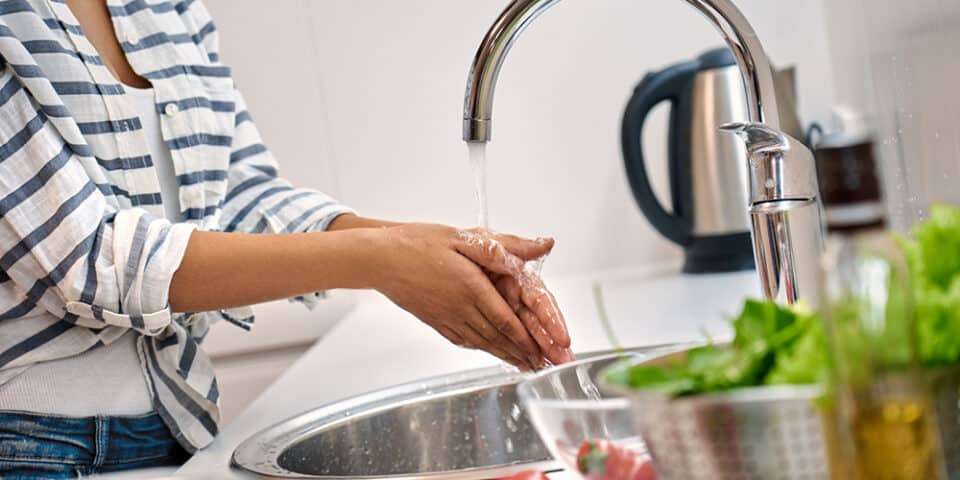4 food safety rules we should all be following
Anyone who has suffered through a case of food poisoning knows it’s not something you ever want to repeat. The good news? Food poisoning is mostly preventable. John Manna, FNP, shared tips on how to avoid food poisoning at home and the essential food safety rules you need to know.
How can you prevent food poisoning?
“It depends on the foods you’re preparing and where you’re buying them from, but overall, there are four rules to follow that can prevent food poisoning,” Manna said.
- Keep clean. Make sure your hands are clean as well as anything you’re using to prepare the food, such as knives, a cutting board or the countertop.
- Separate. Avoid cross contaminating raw meat with fruits, vegetables and other foods. “One suggestion is to have a separate cutting board for some of these items,” Manna said. “And always make sure that you rewash the utensils in between cutting different foods.”
- Cook to the right temperature. The USDA offers guidelines on what temperature food should be cooked to, depending on the particular meat. “It’s important to have a working thermometer so you can check the temperature of different foods and make sure it’s cooked appropriately so that all the bacteria are killed off,” Manna said.
- Store at the appropriate temperature. Your refrigerator should be set to 40 degrees Fahrenheit or below and your freezer should be zero degrees Fahrenheit or below to make sure food is stored appropriately. Bacteria grows most rapidly when it hits the temperature “danger zone,” which is between 40–140 degrees.
A good way to make sure your refrigerator and freezer are at the right temperature is to use an appliance thermometer. This is especially helpful if the power goes out, there’s an equipment malfunction or if the door is left open and you need to know if the food is still safe to eat.
Is it okay to refreeze foods that have thawed a little bit?
If it’s been less than two hours, you should be able to refreeze food without cooking it.
What are some safe ways to thaw food?
There are three safe ways to thaw food. First is to thaw your food in the refrigerator. The second way you can thaw food is by running it under water. Just make sure the food is in sealed packaging and the water is cold. Running warm water over frozen food can put it in the danger zone for bacterial growth. The third way to thaw food is in the microwave. Be sure to cook the food immediately after thawing. You don’t want to thaw it in the microwave and then let it sit in the fridge for two days before cooking it.
How long can leftovers be kept in the fridge?
Manna said it depends on the food and how the food was cooked. “If you have leftovers, you really should try to eat in the next 3–4 days,” he said.
Leftovers should be stored in containers or wrapped in airtight packaging to keep bacteria out and moisture in. The USDA suggests storing food in shallow containers so it can reach a safe 40 degrees as quickly as possible.
Is it okay to store food in plastic containers?
“I think it’s fine to store food in plastic containers,” Manna said. “The issue usually comes with reheating the food in plastic containers. The type of plastic is important, and make sure it’s sealed well.”
How long can food be left out of the fridge?
A good rule of thumb is two hours if it’s been sitting indoors and one hour if it’s outside.
Effective workouts from anywhere with MoveWell
MoveWell’s monthly workouts are conveniently designed to be performed from the comfort of home, in the office or even the great outdoors. Sign up for monthly workout alerts.
Sign Up Today

